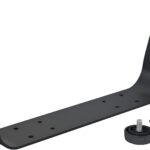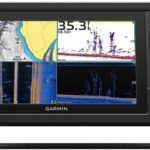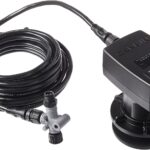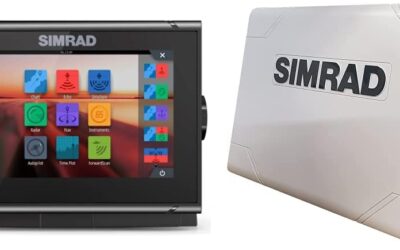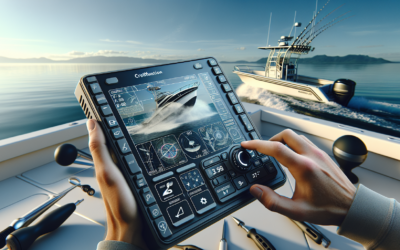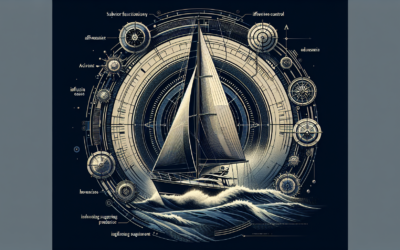In this captivating article, you will embark on an exciting journey exploring the evolution of fish finders, from their humble beginnings in echo sounding to the cutting-edge technology and impressive features of modern displays. Dive deep into the history of these innovative devices as you uncover the advancements that have revolutionized the fishing industry. Discover how fish finders have transformed from basic tools to sophisticated companions, enhancing fishing experiences and increasing the chances of reeling in the big catch. Join us as we unravel the fascinating story behind the evolution of fish finders.
From Echo Sounding to Modern Displays: The Evolution of Fish Finders
Introduction
Welcome to this comprehensive article on the evolution of fish finders! If you’re an avid angler or simply curious about the technology that helps us locate fish, you’ve come to the right place. In this article, we’ll explore the history of fish finders, starting from their humble beginnings with echo sounding technology to the advanced displays we have today. So, grab your fishing gear and let’s dive in!
The Early Days: Echo Sounding
Fish finders have come a long way since their inception in the early 20th century. It all started with a technology called echo sounding, which was initially developed for the purpose of mapping the ocean floor. This early technology used an underwater transducer to generate sound waves and measure the time it took for them to bounce back after hitting an object, such as the ocean floor or a school of fish.
At this stage, fish finders were relatively basic and had limited functionality. The display consisted of a simple dial or meter that indicated the depth of the water and the presence of any underwater objects. While innovative at the time, these early fish finders lacked the visual representation and detail that we now take for granted.
The Advancement of Displays
As technology progressed, so did the capabilities of fish finders. One significant development was the introduction of graphical displays. Instead of relying solely on a dial or meter, fishermen could now see a visual representation of what lay beneath the water’s surface.
Initially, these displays were simple, pixelated screens that showed basic shapes indicating the presence of objects and fish. However, as advancements in screen technology occurred, fish finders started to feature higher resolution displays with more detailed images. This allowed anglers to distinguish between different fish species and even observe the underwater terrain.
Integration of GPS Technology
Another major advancement in fish finder technology was the integration of GPS functionality. With the inclusion of GPS, anglers gained the ability to mark and track their favorite fishing spots, making it easier to return to successful locations. Additionally, GPS technology allowed for the creation of detailed maps that showed underwater topography, including depth contours and drop-offs. This information proved invaluable in planning fishing trips and identifying potential hotspots.
CHIRP Technology: A Game Changer
In recent years, fish finder technology took a significant leap forward with the introduction of CHIRP (Compressed High-Intensity Radiated Pulse) sonar. Unlike traditional sonar that emits a single frequency signal, CHIRP sonar sends out a continuous sweep of frequencies. This results in much clearer, detailed images and improved target separation. With CHIRP sonar, angers can now not only see fish but also identify their size and distinguish between different species with greater precision.
Integration with Mobile Devices
The advancement of fish finders didn’t stop with CHIRP technology. Today, many fish finders can be seamlessly integrated with mobile devices, such as smartphones and tablets. This integration allows anglers to view and control their fish finders remotely, providing them with greater flexibility on the water. Anglers can now use their mobile devices to access detailed maps, adjust settings, and even share their fishing spots and catch data with other fellow fishermen.
The Future of Fish Finders
As technology continues to advance, we can expect even more exciting developments in the world of fish finders. One area of innovation is the use of artificial intelligence (AI) and machine learning algorithms to analyze and interpret sonar data in real-time. This would allow fish finders to provide even more accurate and actionable insights, helping anglers optimize their fishing strategies.
Additionally, there is growing interest in developing fish finders that can detect and track fish movement in three dimensions. This would provide anglers with a more comprehensive understanding of fish behavior, allowing them to make more informed decisions on where and how to fish.
Conclusion
From their humble beginnings with echo sounding to the advanced displays and technology we have today, fish finders have revolutionized the way anglers locate and catch fish. As we’ve explored in this article, fish finders have evolved from simple depth meters to sophisticated devices capable of providing detailed underwater images and precise fish identification.
As you head out to your favorite fishing spot armed with your modern fish finder, take a moment to appreciate the technological advancements that have made fishing more efficient and enjoyable. Whether you’re an experienced angler or just starting out, a fish finder is a valuable tool that can greatly enhance your fishing experience. Tight lines and happy fishing!

